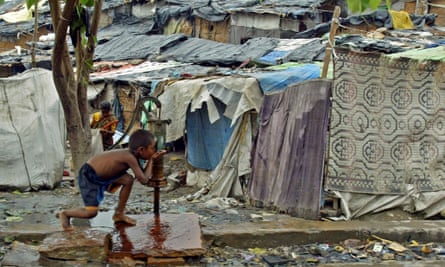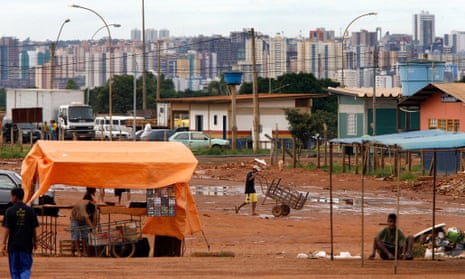We have, it seems, no difficulty in dealing with the idea of cities, historically or in day-to-day life across the world. Cities are often iconic and in many ways define national identity. On the whole, we like them.
We have much more difficulty coming to terms with urbanisation – the process by which cities grow and change. China has just announced its very first "urbanisation policy", while India is aggressively pursuing the idea of "smart cities". Neither takes full account of the reality faced by the overwhelming majority of citizens caught in this turmoil of urban growth. As a result, such grand strategies risk perpetuating the social exclusion, inequity and precariousness of urban life.
We might be fascinated by cities, but we tend to see them in dichotomous ways. On one hand, they are held to be the key to economic growth and increased prosperity. There is a well-established school of city utopianism as exemplified by what Harvard economist Ed Glaeser calls "the triumph of the cities". This notion of world cities as nodes in a network of transnational flows of capital, people and ideas is central to the neoliberal agenda.
But there is also a dystopian view of cities (typically associated with sub-Saharan Africa) as being chaotic, and a focus of poverty and violence. The Democratic Republic of the Congo's capital Kinshasa, with a population of 9 million, is described by Belgian anthropologist Filip De Boeck as “a city that is in and of itself elsewhere, invisible”. In development policy, cities were (and to a degree still are) seen as malevolent, sucking in productive people from rural areas and undermining agricultural production, the basis of economic development.
The reliance on western models of urban planning and containment has resulted in a catastrophic failure to manage the growth of cities in many low- and middle-income countries. Most development policy has lacked a specific urban perspective, with the result that cities have grown haphazardly in the face of irresistible migration and population growth. Urban policy, where it existed at all, has sought membership of the elite of global cities pursuing high-value real estate development and prestige projects while ignoring the needs of the poor, who are an essential component of city economies.
In Brasilia, the epitome of planned urbanisation, “there is barely a trace of poverty or even of the working class," writes Seth Kugel in the New York Times. "But that’s an illusion: the poorer residents of the federal district live in satellite cities – dense clusters of high-rise apartment buildings that dot Brasilia’s horizon.” Like Kinshasa, it is another example of an invisible city.
Control of land development and the receipts of increased value are captured by elites who in turn occupy the most advantageous sites, often in gated communities protected by private security. The poor, lacking access to land and housing, occupy vacant land that is often polluted or unstable to create so-called 'informal settlements' that sit alongside slums. They establish informal economies, making a livelihood outside the formal economy of contracts and wage labour.

These ‘unauthorised’ areas necessarily come into being without basic infrastructure. They expose their communities to scarce and high-cost water and lack of sanitation, resulting in a huge burden of communicable and non-communicable disease. The growth of such settlements places increasing burdens on municipalities, which lack a resource base.
Where the two systems conflict, unilateral action is sometimes taken to remove the poor – usually to low-value land on the city periphery, whether low-cost housing is provided or not. In Delhi, between 2004 and 2006, more than 300,000 people were displaced from the Yamuna River area in pursuit of the global city vision – and the process continues. In 2013, the Gayatri Colony in west Delhi was partially destroyed by police action. "They did not even allow us to gather our belongings,” said Prahbu Dayel, who lost his mud house in the process.
Peripheralisation means enduring long daily journeys on congested roads to reach the means of making a living. In this sense, urbanisation is a process whereby cities are segmented and society fractured in a process of spatial segregation not dissimilar to the colonial period zoning that kept classes apart. The poor are excluded and denied access to public goods.
The urban predicament is incredibly diverse – yet the overwhelming evidence is that urban policy has failed to manage cities in a way that secures social, or spatial, justice. This is the case both in Latin America, where urbanisation is beginning to reach its limits, and in India and Africa, where the scope is still enormous. It is a constant refrain in the UN Habitat’s series of State of the Cities reports.
There is, though, a growing realisation that a new paradigm – or what has been called a "sustainable urban transition" – is imperative. The government in China, the recent epicentre of city growth, announced its very first urbanisation plan in March 2014, with the stated aim of repairing social exclusion and embracing sustainable city management as an explicit means of sustaining property and growth.
If the question is 'are cities good for us' then the answer is, it all depends. Badly managed urbanisation will result in fragmentation, social exclusion and inequity. Lack of access to water, sanitation, secure tenure and good housing, exposure to pollution, violence and injury, together with the barriers to earning a livelihood, will place an intolerable burden of ill health and premature mortality on the poor. This, in turn, will undermine national development.
What is also increasingly recognised is that all of these burdens – the diseconomies of urbanisation – are, and will increasingly be, exacerbated by climate change and resource scarcity. These immense challenges cannot be met without solving the contradictions of urbanisation. Central to this must be the engagement of the poor in defining trajectories for city growth and change which deliver spatial justice within cities and countries.
David Kilcullen, in his book Out of the Mountains, essentially offers two urban scenarios. A dystopian world in which "feral cities", controlled by powerful groups, become crucibles for guerrilla warfare or insurgency; or a much more optimistic one, in which communities are engaged in choosing the future that restores their faith and stake in the cities. It is time to choose.
Neil Blackshaw is a town planning consultant with a particular interest in the global south.

Comments (…)
Sign in or create your Guardian account to join the discussion